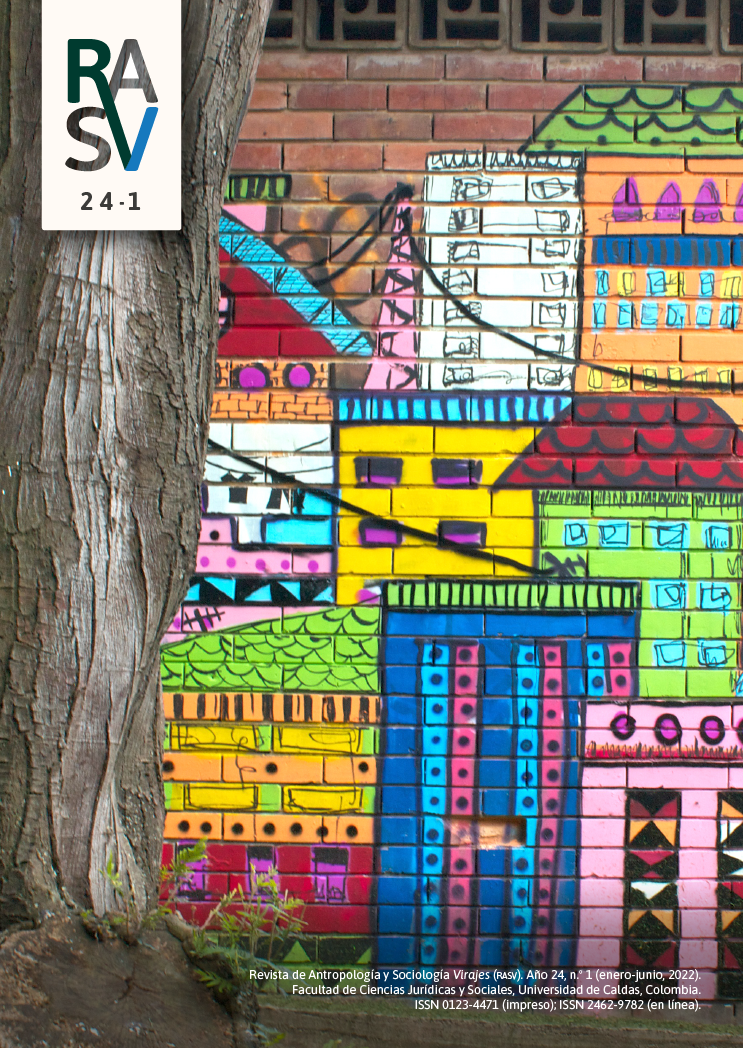Autores/as
Resumen
El idioma urdu, conocido alternativamente como indostaní, gozó del estatus de lengua franca en el subcontinente indio debido al hecho de que era un
medio de expresión común utilizado por los indios independientemente de su fe. Sin embargo, hacia mediados del siglo XIX, las mutaciones en la escena india iban a plantear un desafío a este estatus que convirtió a este idioma en un idioma exclusivamente islámico. Por lo tanto, este trabajo busca resaltar
el proceso de esta transición, es decir, de un lenguaje común de todos a uno comunal, así como las fuerzas motrices detrás de tal cambio que, en última
instancia, condujo a la fragmentación del país a mediados del siglo XX.
Palabras clave
Citas
Aziz, K. K. (1967). The Making of Pakistan: A Study in Nationalism. Chattos & Windus.
Fatehpuri, F. (1987). Pakistan Movement and Hindu-Urdu Conflict. Sang-E-Meel.
Gandhi, R. (1987). Understanding the Muslim Mind. Penguin Books India.
Hasan, T. (2006). The Aligarh Movement and the Making of the Indian Muslim Mind: 1857-2002. Rupa.
Jaffrelot, C. (1988). L’émergence des nationalismes en Inde: Perspectives théoriques. Revue française de science politique, 38(4), 555-575. https://doi.org/10.3406/rfsp.1988.411152
Lee, C. (2000). Hit It with a Stick and It Won’t Die: Urdu Language, Muslim Identity and Poetry in Varnasi, India. The Annual of Urdu Studies, 15, 337-351. http://digital.library.wisc.edu/1793/18169
Malik, J. (2008). Islam in South Asia: A Short History. Brill.
Muhammad, S. (1978). The Aligarh Movement: Basic Documents: 1864-1898. Meenakshi Prakashan.
Qureshi, I. H. (1977). The Muslim Community in the Indo-Pakistan Subcontinent (610-1947): a Brief Historical Analysis. Ma‘aref.
Ikram, S. M. (1964). Muslim Civilization in India. Columbia UP.
Limaye, M. (1989). Indian National Movement: Its Ideological and Socio-Economic Dimensions. Sangam Books.
Keay, F. E. (1933). A History of Hindi Literature. YMCA.
King, C. R. (1994). One language, Two Scripts: The Hindi Movement in Nineteenth Century North India. Oxford UP.
Lunn, D. J. (2012). Looking for Common Ground: Aspects of Cultural Production in Hindi/Urdu, 1900-1947 (PhD thesis). SOAS University of London, London.
Metcalf, B. D. (2003). Urdu in India in the 21st Century: A Historian’s Perspective. Social Scientist, 31(5/6), 29-37.
Rahman, T. (2010). Urdu and the Muslim Identity: Standardization of Urdu in the Eighteenth and Early Nineteenth Centuries. The Annual of Urdu Studies. 25, 83-107. http://digital.library.wisc.edu/1793/53765
Rahman, T. (2006). Urdu as an Islamic Language. The Annual of Urdu Studies. 21, 101-119. https://minds.wisconsin.edu/bitstream/handle/1793/18580/06Rahman.pdf?sequence=2
Russell, R. (1999). How Not to Write the History of Urdu Literature: And Other Essays on Urdu and Islam. Oxford UP.
Spear, P. (1990). A History of India: From the Sixteenth Century to the Twentieth Century. Penguin Books.
Srivastava, S. (1995). Review of One Language, Two Scripts: The Hindi Movement in Nineteenth Century North India by Christopher R. King. Social Scientist, 23(4/6), 108-116.

 PDF
PDF
 FLIP
FLIP



















